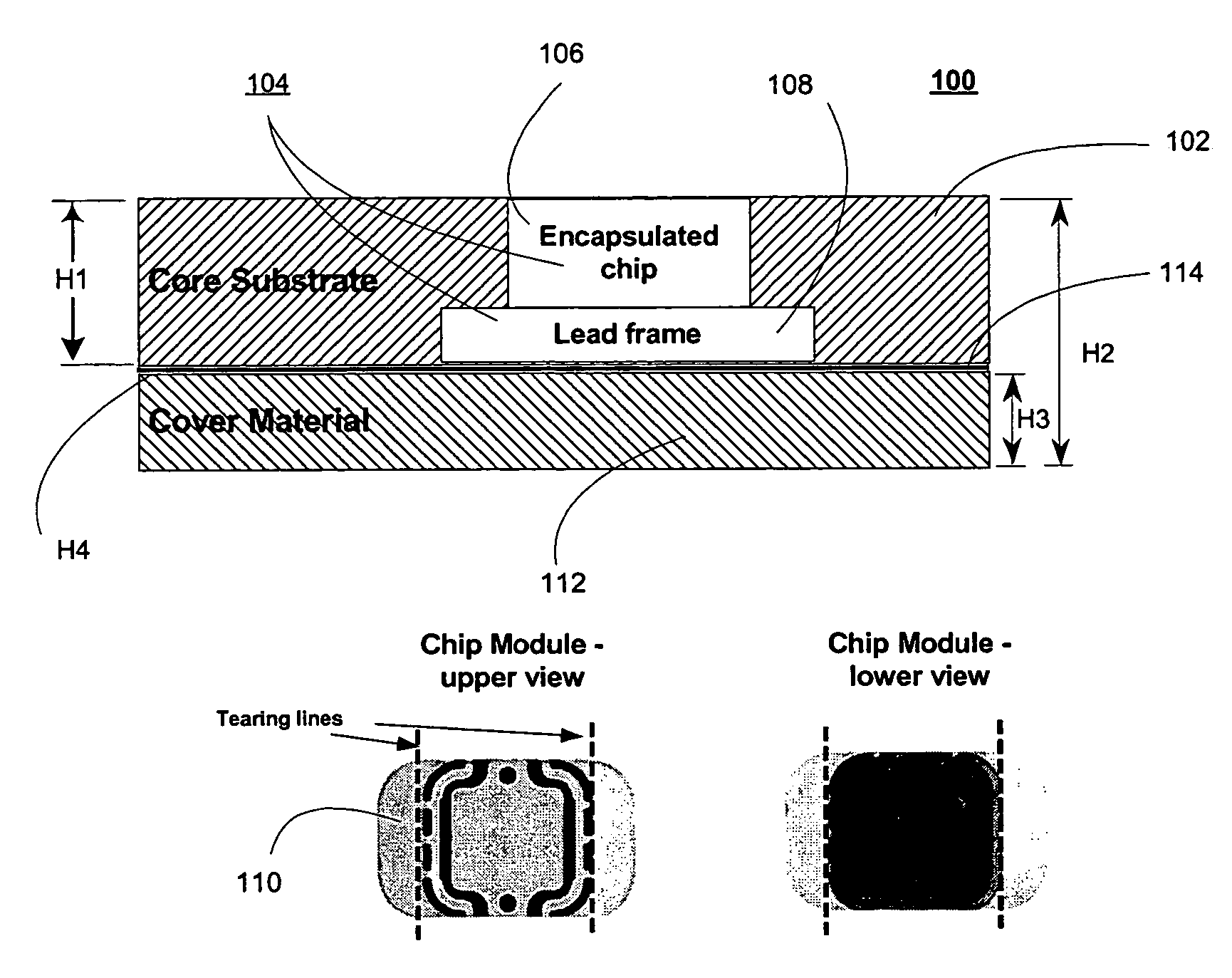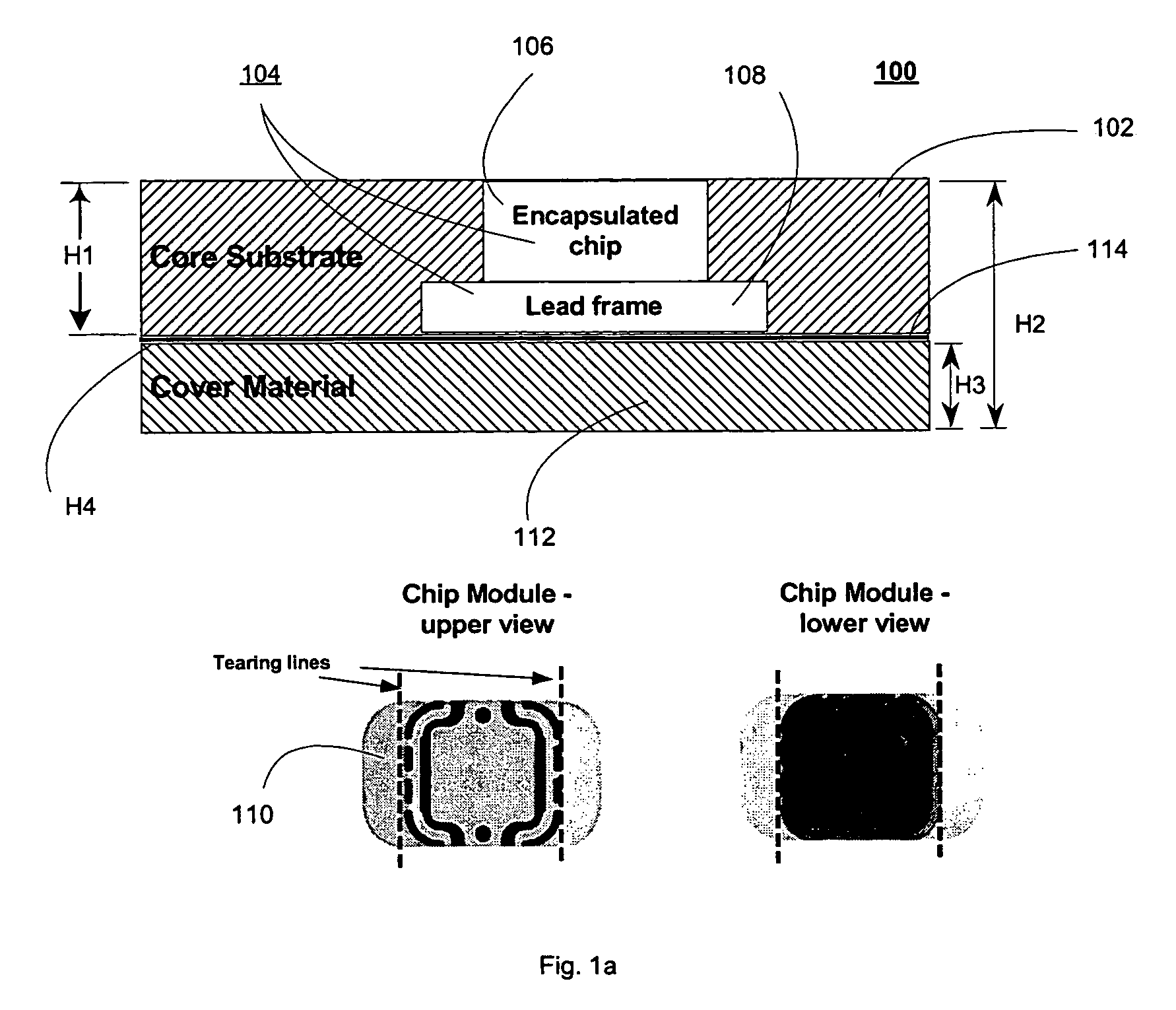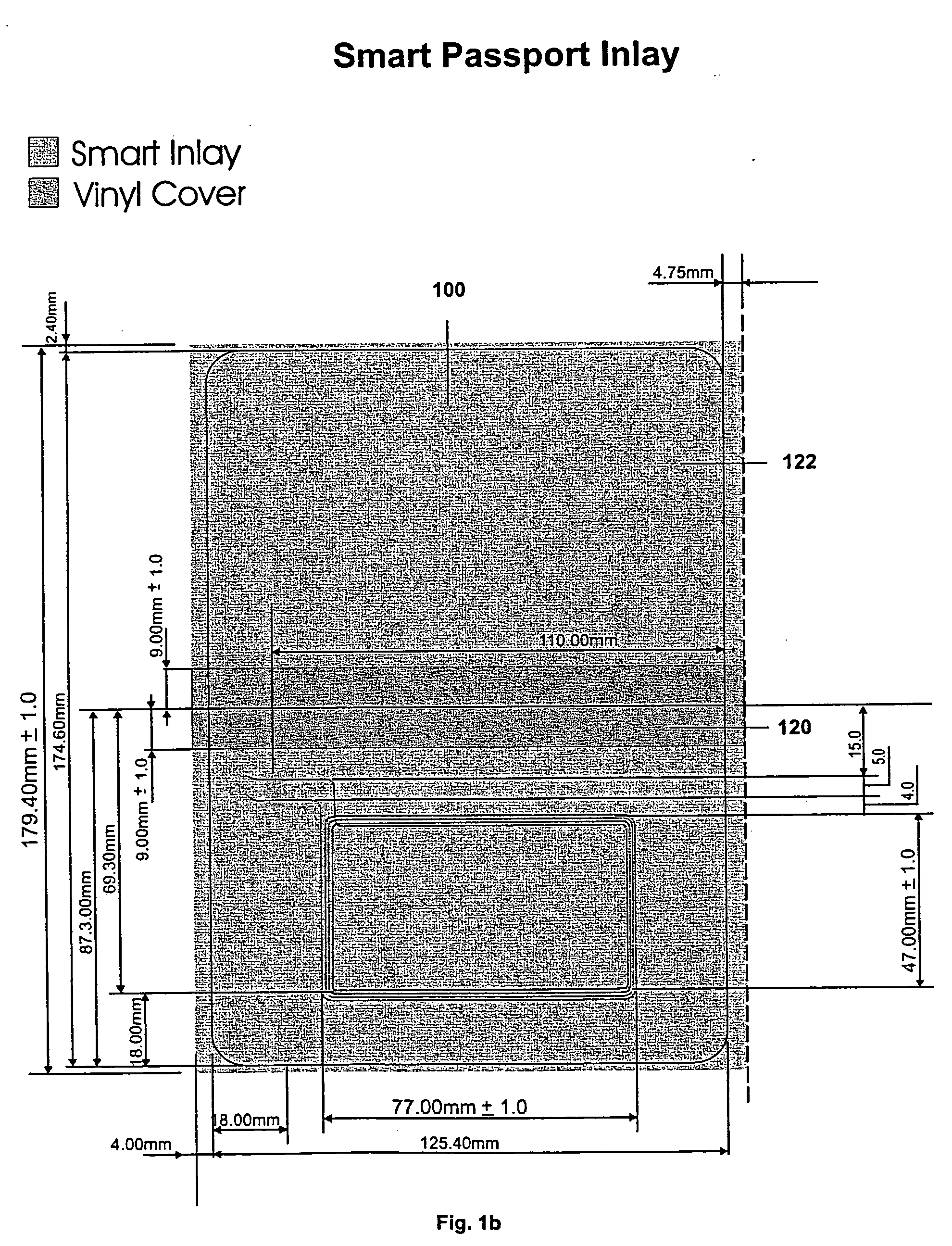Tamper-free and forgery-proof passport and methods for providing same
a passport and forgery-proof technology, applied in the field of smart passports, can solve the problems of not being able to transmit biometric information securely, not being able to print identification information currently available to positively identify passengers with high reliability, and not being able to achieve the effect of preventing tampering
- Summary
- Abstract
- Description
- Claims
- Application Information
AI Technical Summary
Benefits of technology
Problems solved by technology
Method used
Image
Examples
embodiment h
[0035] Embodiment H shows in cross section a composite adhesive structure in which a first adhesive 380 and a second adhesive 382 (both having a tooth-like appearance as in FIG. 3b) are interlocked or interlaced, locking in an antenna 384. The first adhesive is deposited such that it has a plurality of holes, “dips” or “valleys” in the vertical direction perpendicular to the core substrate top surface. The antenna is wound and pressed in, preferably under heat, as described in step 356. The second adhesive layer is then applied, filling in the holes, dips or valleys of the first adhesive, and locking the antenna in place in the composite two-adhesive layer. The cross section in H is in essence an enlargement of line 114 with thickness H4 in FIG. 1a for a specific embodiment. Thus, the two adhesives and the antenna are locked between a core substrate 386 and a cover 388.
[0036] The invention thus advantageously provides a number of physical security features, some of which have been m...
PUM
 Login to View More
Login to View More Abstract
Description
Claims
Application Information
 Login to View More
Login to View More - R&D
- Intellectual Property
- Life Sciences
- Materials
- Tech Scout
- Unparalleled Data Quality
- Higher Quality Content
- 60% Fewer Hallucinations
Browse by: Latest US Patents, China's latest patents, Technical Efficacy Thesaurus, Application Domain, Technology Topic, Popular Technical Reports.
© 2025 PatSnap. All rights reserved.Legal|Privacy policy|Modern Slavery Act Transparency Statement|Sitemap|About US| Contact US: help@patsnap.com



